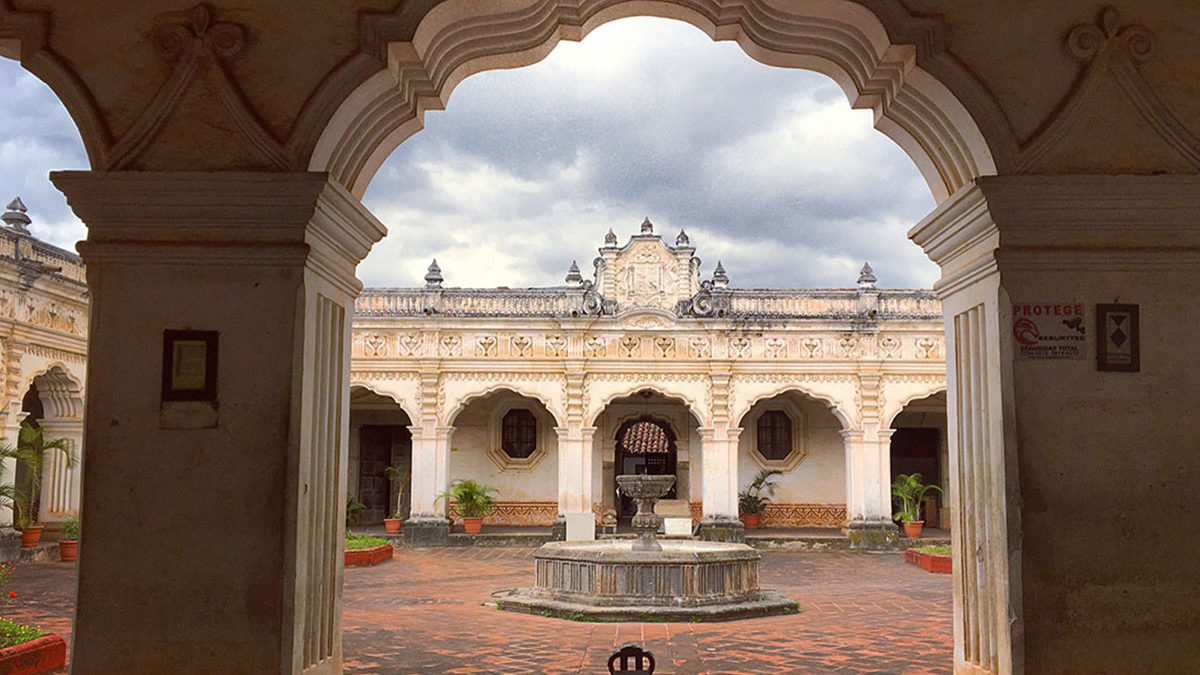Antigua Guatemala has its own characteristics that have remained throughout history as their unmistakable signs of identity. For example, the grid layout of the city and its cobblestone streets are a unique imprint, as part of our inheritance of centuries of having been a capital of great splendor.
As for religious architecture, Antigua has the monumental presence of the most important Catholic religious orders, derived from the fact that it was from here they started to evangelize the provinces. Some elements are profuse, like the serliana pilaster, the octagonal window, the niche, the mixtilinear arch and the abundant use of stucco to mold beautiful vegetable figures – this was given the name “ataurique”.
Civil architecture is not far behind and it is enough to cite as an example the stout portals and columns that support both the Municipal Palace and the Real Palacio de los Capitanes Generales, both of incalculable historical value and beauty.
Private residences still exhibit elements and details of great importance, such as the large doors with knockers shaped in the form of a female hand or lion and the old wooden or stone lintels that lead into the hall and its cast bench to await without accessing the house.
The courtyards and their wide corridors with stone bases for wooden columns that support the Spanish terraces are quite a sight. Their purpose was not only to provide a walking space between the different rooms but to serve as a fresh and airy path. The courtyards can have fountains, búcaros (smaller wall fountains) and, of course, the indispensable pilas (a less decorated water fountain). When walking on its sidewalks, we admire flowery windows, in particular those popularly known as the gossips, because they face the street and the avenue.
Many walls are like history books that show the different layers of paintings with abstract artistic forms. The old houses had kitchens with a central support powered by firewood. The smoke rose by convection and was released to the outside through a dome, called “lantern” through the small windows operated by a chain. Nowadays many of these details are used in the construction of modern houses, always with previous regulation of the National Council for the Protection of Antigua Guatemala, an entity created in 1969; in order to not to lose the identity of the colonial city.

From the Autor:
Pascu Robredo Arrutia is a general tourist guide in Guatemala. He has a restless mind, is curious by nature and is passionate about book, music, cinema and art in general.
To check schedules and rates you can visit or call: [email protected]/ (502) 4010-6592


